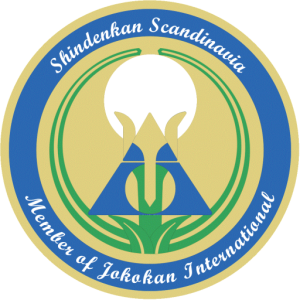By Jonas Munkesøe, Member until 2012
There was no further theoretical introduction on this TSM Hsingi A; that, on the other hand, had to wait until the next part of the course and until then, we had to make an effort ourselves to satisfy our curiosity. However, we were quickly introduced to the key words: precision, speed and power. In addition, we were all "unique", which was confirmed many times.
In pairs, we soon had to test each other's balance points and other weak points. We then transferred this knowledge to free kumite with 30 % from heikodachi. It consisted of one strike (nakadakaken, ipponken, seiken – right or left) as well as one parry and one finishing attack. Technically it may sound rather straightforward, but in most cases it is more simple than "easy".
Afterwards, in the groups, we gave each other feedback - what worked, what didn't and why?
Uncomfortable and unfamiliar
Along the way we were stopped many times so that we could collect our thoughts for a moment and evaluate what went well and what went badly; individually and together. Comfort zones were particularly discussed as these were at the root of our limitations (where were we uncomfortable and why?). Our habits were quickly reflected in our technique, which is why it became predictable and thus far too comfortable.
In addition, one could very appropriately ask oneself whether an attack was intended to hit at all, and whether a parry, on the other hand, was intended to parry? And in both cases YES because otherwise it is nothing but an illusion! - is the answer, of course, but it can be disturbing how little you follow such a way of thinking. Something as banal as just hitting with my left hand (when I can just as well hit with my right) can seem unfamiliar to me.
As the group gets to know each other's strokes and parades, you adapt to the circumstances, and then it can be difficult to "think outside the box" and try something new. When the groups subsequently got new faces, it again became a bit uncomfortable and unfamiliar.
(In)efficient learning
The setting was crucial, and we both recognized and experienced that. During the many group conversations we discussed why we were only 98 or 99 % – or far less – mentally present when we could be 100 %? It resulted in a lot of "wise words and conclusions" on our part.
In the groups we continued with the new approaches we had acquired, but it wasn't many minutes before Kimu Sensei caught us all red-handed in our inadequate attempts to "see and learn" without actually learning anything by seeing.
What does soft yellow corn do when none of it can be used in practice? Then it is nothing but useless knowledge!
The course as a whole focused a lot on our attitude - and why now, I thought? Shouldn't we be learning some hsingi along the lines of Bruce Lee's 1 inch punch? However, I soon found out that it was not completely insignificant and accidental that this was emphasized: (in)effective learning is of course dependent on the attitude, and so are our opportunities to defend ourselves.
When TSM Hsingi A ended, one was left with a feeling that one had not seen the forest for the trees; that the essence was so simple and at the same time so intangible – and how easy it was to describe one's own thoughts in the form of words, but how difficult it was to transfer them into actions.
But we are unique, and as long as we keep that in mind, it will never go wrong. After all, it is in self-belief that you develop.




